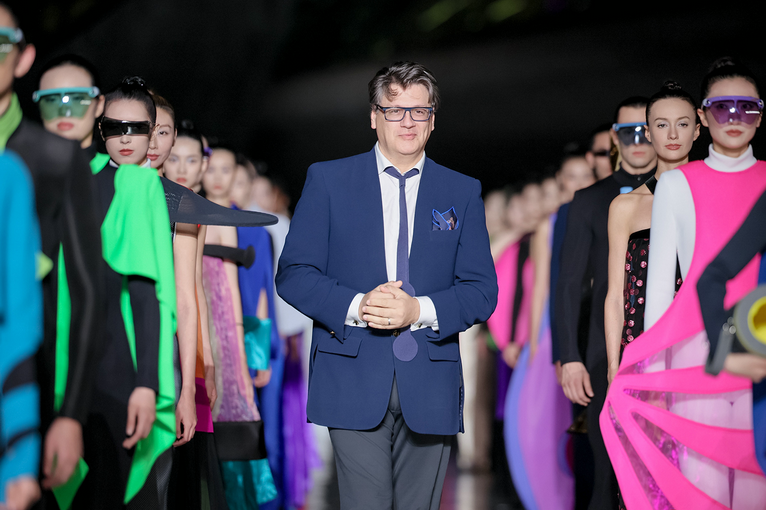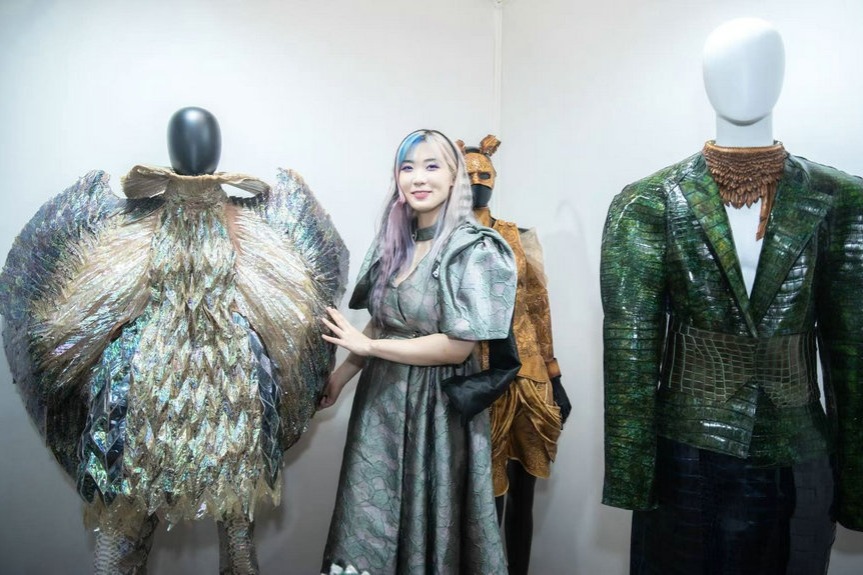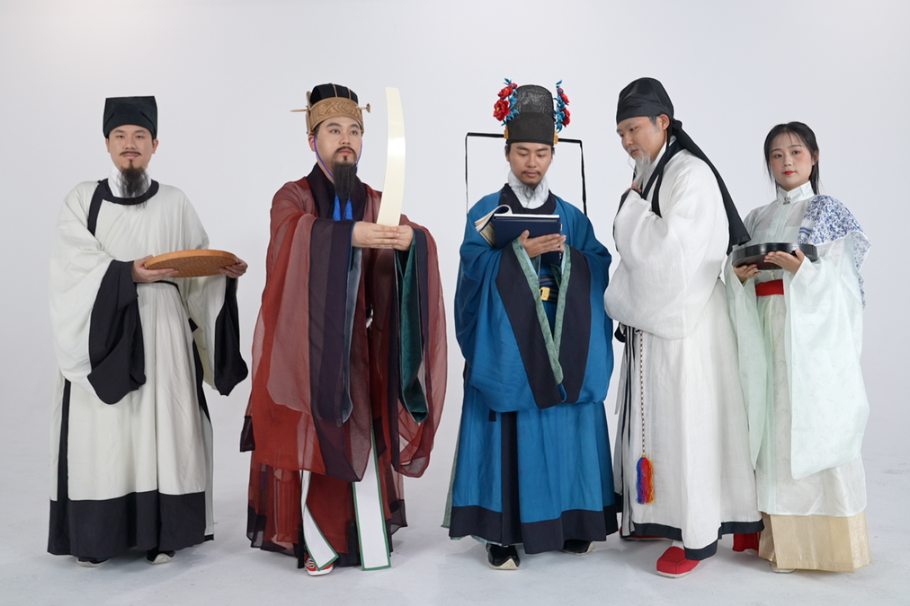Fashion icon's sharp sense of style


The exhibition in Shanghai is structured around distinct themes across eight rooms, each focusing on a different design era that encompasses punk origins, wonderland fantasies, the ecological "Do It Yourself" philosophy, cultural explorations, 18th-century parure, and a tribute to the brand's emblem in "The Orb Tree".
The "Origins" room hums with countercultural energy. Wallpaper adorned with 1970s punk imagery frames exhibits such as safety-pin necklaces and studded cuffs, artifacts that originate from Westwood's days at the Portobello Road market. Nearby, 18th-century-style pearl tiaras glint in the light, revealing her lifelong fascination with historical opulence — a duality that defines her work.
Against this backdrop, visitors trace the roots of her style through early works and emblematic jewelry pieces that encapsulate her look. Her activism is also prominent in her use of recycled materials, reflecting a deep commitment to ecological causes.
Inspired by the Greek mythological satyr, a symbol of untamed freedom, Westwood introduced horns as accessories in her Spring/Summer 1988 show, a design also featured in the Shanghai exhibition. Davidson highlights these horns as among Westwood's cherished jewelry creations.
One of the important exhibition series is The Orb, which Kronthaler describes as "a jewel symbolizing the world: about its past, present and, with the added Saturn ring, its future".
"It's very British and very Vivienne," he says. This motif comes to life in "The Orb Tree", where luminous replicas dangle above clips from legendary runway shows, illustrating its evolution from royal regalia to a punk-chic icon.
The "Parure" section highlights Westwood's love for 18th-century art. Davidson explains that Westwood was interested not only in 18th-century art but also its thinkers, figures and writers, which are all reflected in this collection. "The mannequin wears a contemporary parure set with a tiara, earrings and necklace, integrating various styles and materials," she adds.
Alongside meticulously crafted precious metals, Westwood often employed unusual, rustic materials, colors, and shapes, replacing crystals and precious metals with clay, plastic, wood, or papiermache. This underscores her constant questioning of value systems and refusal to conform.




































